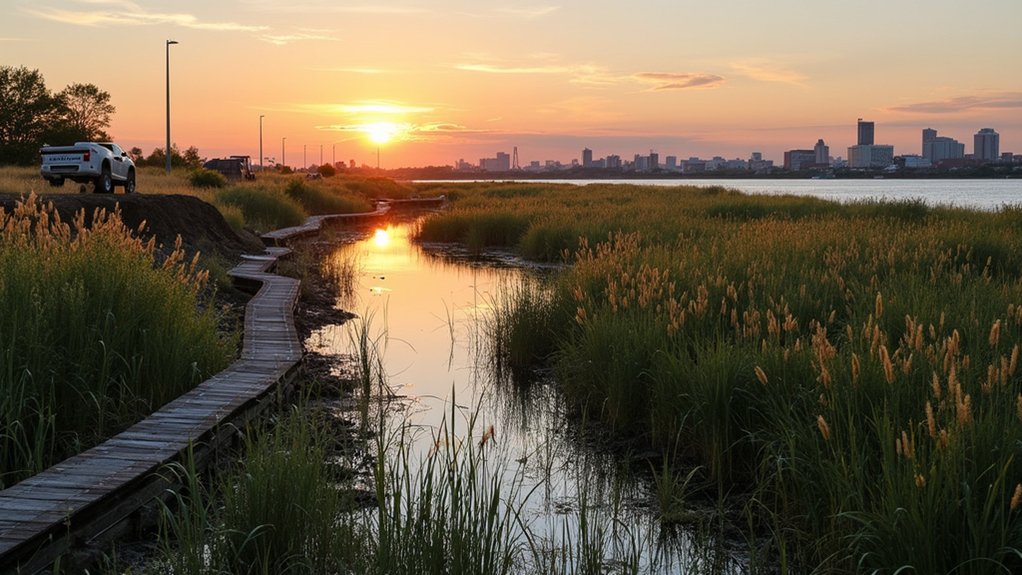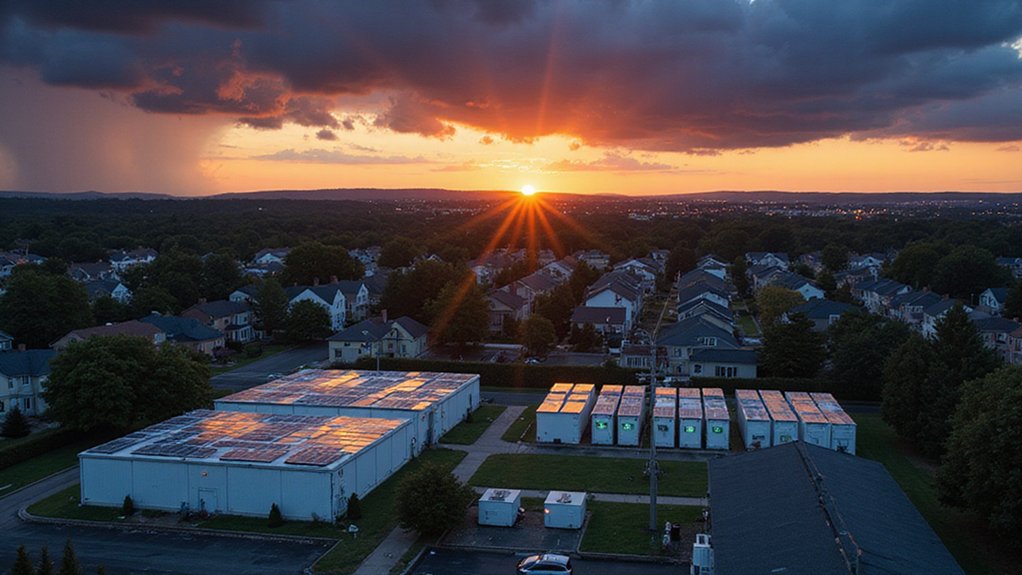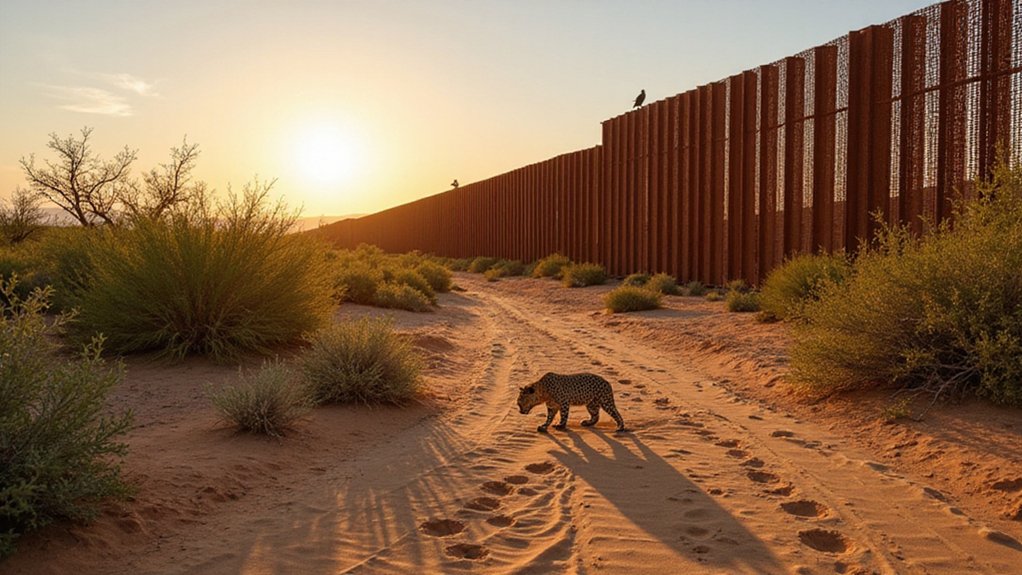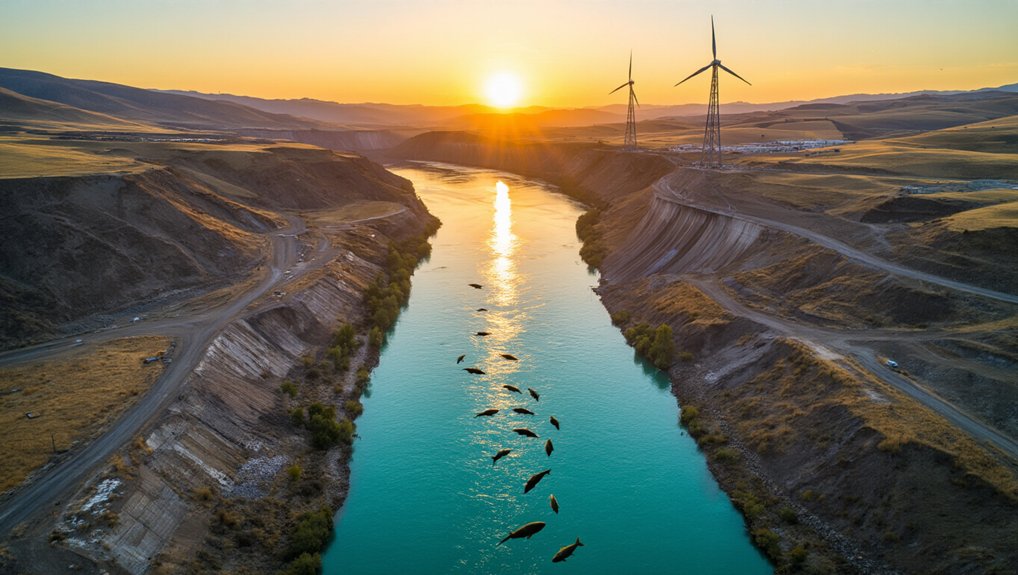After decades of industrial abuse and neglect, Baltimore’s waterfront is finally getting the ecological makeover it deserves. An $11.5 million project aims to restore 11 acres by 2025, part of a larger 50-acre plan along the Patapsco River. It’s about time. South Baltimore neighborhoods have suffered long enough.
The Middle Branch Resiliency Initiative is tackling 11 miles of shoreline, focusing on areas like Hanover Street Wetlands and Cherry Hill. It’s Maryland’s largest coastal restoration effort. Big deal, right? Well, actually, it is. These wetlands act as natural buffers against storm surges and flooding, protecting neighborhoods that city planners typically forget about.
Maryland’s most ambitious coastal restoration isn’t just ecological window dressing—it’s life-saving infrastructure for long-neglected neighborhoods.
Funding totals $67 million from a patchwork of local, state, and federal sources. But here’s the twist: federal support is wavering. FEMA rescinded climate infrastructure funds in early 2025, forcing some projects onto the back burner. Classic government reliability. Projects already under construction continue, but others? Not so lucky. This mirrors the clean energy abandonment seen when the U.S. withdrew from global climate commitments between 2017 and 2020.
These wetlands aren’t just pretty. They filter urban pollutants, provide critical habitats for wildlife, and absorb runoff from storms. The ecosystem facilitates nutrient exchange with open water. Dr. Eric Schott from the University of Maryland stresses the importance of understanding nature’s role in urban settings. Science stuff that matters, especially when your basement floods every spring.
For communities long affected by industrialization, the restoration creates green spaces where concrete once dominated. The project initiated on April 19, 2024 marks a significant milestone in the restoration timeline. Local groups like the South Baltimore Gateway Partnership are heavily involved. They have to be. No one else seemed to care for generations.
The revitalization represents essential climate adaptation for low-income neighborhoods. Property damage risks decrease. Biodiversity increases. Native plants return. It’s a win-win, assuming the funding holds.
Despite federal dollars disappearing like magic, local investment and partnerships keep the momentum going. Baltimore isn’t giving up. The city is salvaging what remains of its ambitious plan, proving that sometimes environmental restoration depends more on stubborn local determination than fickle federal promises.
References
- https://www.ehn.org/baltimore-is-restoring-wetlands-to-protect-neighborhoods-from-climate-threats
- https://www.wypr.org/wypr-news/2024-04-19/restored-wetlands-could-help-protect-neglected-south-baltimore-communities
- https://mde.maryland.gov/programs/water/StormwaterManagementProgram/Documents/NPDES Capacity Files/Baltimore City Files/Baltimore City Portfolio 5-15-2020.pdf
- https://insideclimatenews.org/news/13072025/baltimore-wetlands-restoration-federal-funding-setbacks/
- https://www.wypr.org/wypr-news/2025-06-09/despite-federal-and-state-challenges-resiliency-and-native-plants-grow-in-baltimore-wetlands








